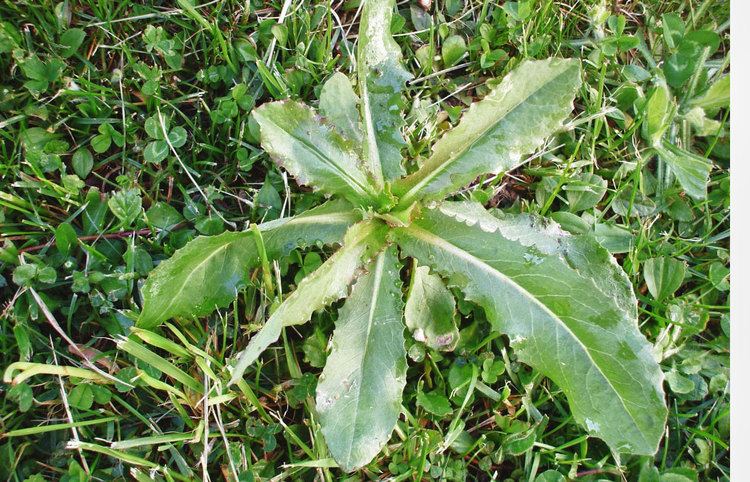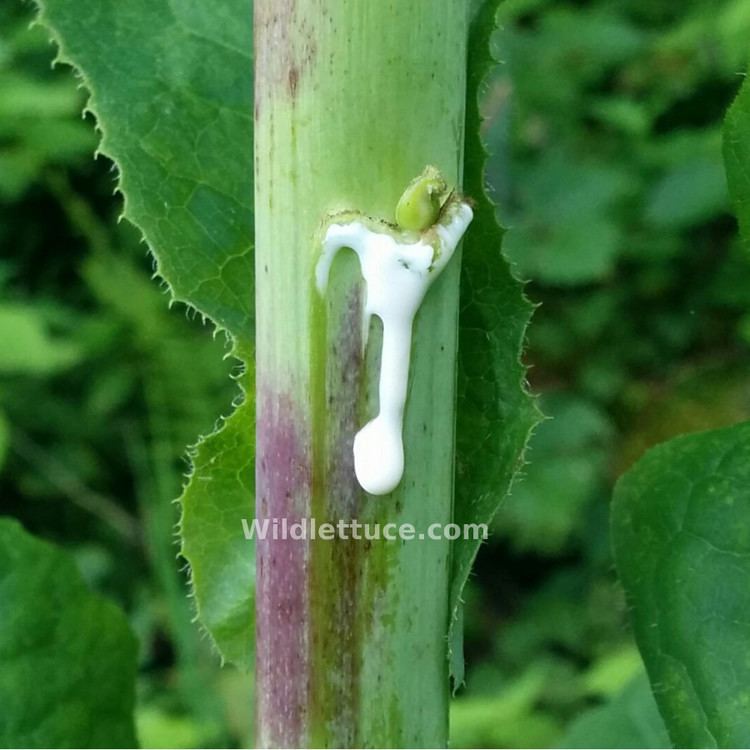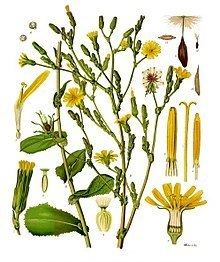Higher classification Lactuca | Tribe Cichorieae Scientific name Lactuca virosa Rank Species | |
 | ||
Similar Lactuca, Prickly Lettuce, Lactuca saligna, Daisy family, Lion's ear | ||
Lactuca virosa is a plant in the Lactuca (lettuce) genus, ingested often for its mild psychotropic (specifically hypnotic or sedative) effects which are often described as being similar to those of opium. It is related to common lettuce (L. sativa), and is often called wild lettuce, bitter lettuce, laitue vireuse, opium lettuce, poisonous lettuce, tall lettuce, great lettuce or rakutu-karyumu-so.
Contents

Lactuca virosa is widespread across much of central and southern Europe. It can be found locally in the south east and east of England. In the rest of Great Britain it is very rare, and in Ireland it is absent. It is also found in the Punjab Region of Pakistan India and Australia where it grows in the wild.

In North America, it has been documented as introduced in California, Alabama, Iowa, and Washington, DC, and grows wild in other parts of the continent.
Description

Lactuca virosa is biennial, similar to prickly lettuce Lactuca serriola but taller - it can grow to 200 cm (80 inches or almost 7 feet). It is also stouter, the stem and leaves are more purple flushed, the leaves are less divided, but more spreading.
The achene is purple black, without bristles at the tip. The pappus is the same as Lactuca serriola.
In the northern hemisphere, it flowers from July until September.
History
Lactuca virosa was used in the 19th century by physicians when opium could not be obtained. It was studied extensively by the Council of the Pharmaceutical Society of Great Britain in 1911. They discovered two chemicals responsible for the properties of L. virosa; lactucopicrin and lactucin. In the United States, the plant experienced a resurgence in popularity in the 1970s. Today the plant is un-scheduled by the Food and Drug Administration (FDA), meaning it is legal to grow, purchase and own without prescription or license.
Pharmacology
A latex which is called lactucarium can be derived from the extract of the stem secretions of Lactuca virosa. Oils and extracts can also be produced from L. virosa. These oils and extracts have sedative properties in rodents.
Lactuca virosa contains flavonoids, coumarins, and N-methyl-β-phenethylamine. A variety of other chemical compounds have been isolated from L. virosa. One of the compounds, lactucin, is an adenosine receptor agonist in vitro, while another, lactucopicrin, has been shown to act as an acetylcholinesterase inhibitor in vitro.
